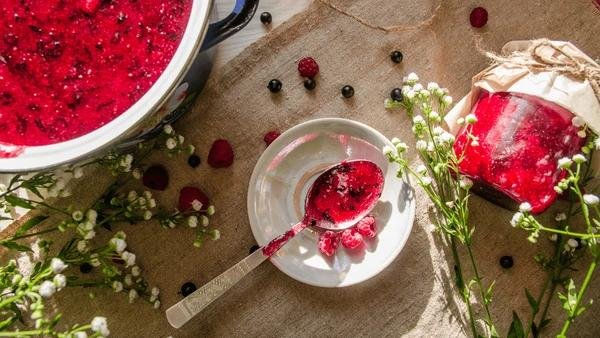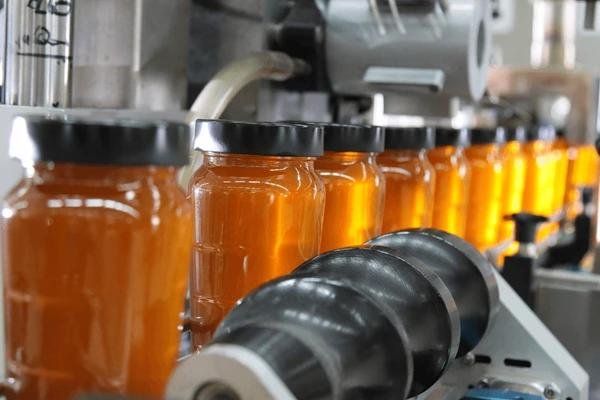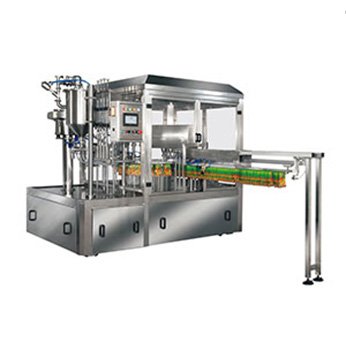It is one thing to make jam at home. Making a business out of it? That is very different. You must be consistent. You must be safe. You require a long shelf life.
Above all, you need the proper tools to make it all work.
These nine steps will explain the process of creating commercial jam and why packaging machines are essential for successful expansion.
1. Selecting and Sourcing Fruit
Good fruit is the foundation of good jam. Always.
Ripe but firm fruit is what you need. It becomes mushy if it is too soft. It’s too tough and lacks flavor.
The actual difficulty? obtaining consistent quality each time.
Businesses collaborate with dependable vendors who produce batches on time. Although it’s seasonal, fresh fruit is fantastic. Individually fast frozen fruit, or IQF fruit, becomes your best friend in this situation.
It is accessible all year long. The quality remains constant. Additionally, you don’t have to worry about seasonal gaps when scaling production.
Examine everything that comes into your facility. Everything you’ve built can be destroyed by one lousy batch.
2. Washing and Preparing
Cleaning everything completely is the first stage in the production process.
Pesticides, residue, and dirt must be removed. Small businesses may do their own washing, but as you expand, industrial washers become indispensable.
The preparation work follows.
Strawberries are among the fruits that retain their skin. Others, like peaches, get peeled. Take out the cores, pits, and stems. To ensure consistent cooking, cut everything to comparable sizes.
This is more important than most people realize. Uneven pieces result in uneven cooking, which affects the finished product’s texture.
It requires time. However, you cannot omit this step at all.

3. Weighing and Mixing Ingredients
The ingredients for jam include fruit, sugar, and pectin.
However, the ratios? They are really important.
Candy is the result of adding too much sugar. If you use too little, it won’t set correctly. “Add sugar to taste,” as the saying goes in home cooking, is not economically viable.
Every time, precise measurements are required.
Pectin aids in the gel and setting of jam. Pectin is naturally present in some fruits, such as apples and citrus. Some, like peaches and strawberries, require additional assistance.
To add acidity, squeeze in some lemon. It enhances the flavor and aids in setting.
Commercial mixers or big kettles are used to mix everything. Here, accuracy dictates uniformity throughout all of your batches.
4. Cooking the Mixture
This is where jam is made from fruit.
The fruit is broken down, and the pectin is activated by heat. Open kettles are used for small amounts. Steam-jacketed kettles, which give uniform, regulated heat, are used in larger operations.
Temperature is important. Most jams cook between 104°C and 105°C.
It won’t set if it’s too low. If you set it too high, it will burn or get too thick. Sticking and burning at the bottom can be avoided with constant stirring.
Pay close attention to it. Within minutes, jam can change from being flawless to being burned.
Fruit type and batch size affect cooking time, which typically ranges from 20 to 40 minutes. As the water evaporates, you’ll notice that it gets thicker.
Use a refractometer or the wrinkle test to determine doneness. It cleanly sheets off a spoon when it’s ready.
5. Hot Filling Into Jars

The crucial step is to pour the jam into jars while it’s still hot.
For safety and shelf life, hot filling is crucial. It produces the crucial vacuum seal and eliminates microorganisms.
At this point, filling machines are crucial to commercial production.
Hot liquids are handled reliably and safely with our automatic spout pouch jam small liquid filling machine. Every time, they fill precisely the right quantity. Don’t overfill. No underfill. No waste.
Semi-automatic fillers may be used for small operations. They can manage respectable quantities and are reasonably priced. Depending on the size of the jars, fully automatic filling lines used in large-scale production can fill 50–200 jars every minute.
Filling by hand is laborious and uneven, but it works for small test batches. Manually filling out forms is not scalable.
Each jar should have a headspace of roughly 6 mm. Guesswork and human mistake are eliminated because filling machines are set for precise headspace every time.
Our piston filling machines can handle anything from smooth jellies to chunky fruit preserves since they are made especially for high-viscosity products like jam. They function flawlessly with both glass and plastic containers and maintain constant fill volumes.
6. Sealing the Jars
Lids are put on right away after filling. Individual differences exist in hand-tightening. That is not an issue with machines.
This happens automatically on integrated filling-capping lines. Capping machines place and tighten lids with perfect consistency.
The jam produces a vacuum when it cools, sealing the lid. When jars properly seal, you’ll hear that wonderful “pop” sound.
Examine seals following capping. Although the failure rate of good machinery is quite low, quality management is always crucial.
7. Cooling and Setting
Allow the jars to return to room temperature.
Conveyors or cooling tunnels are useful for larger enterprises. For the best setting, these move jars through regulated chilling zones.
Jars should never be cooled quickly by submerging them in cold water. Jars can break and your goods can be ruined by abrupt temperature changes.
It takes a number of hours to cool fully. Jam solidifies and takes on its final texture when it cools.
Some jams solidify rapidly. Others require 24 to 48 hours to completely set.
When texture is heated, don’t judge it. Check for consistency once it has completely cooled.
8. Labeling and Dating
Each container must be properly labeled. It is not a choice.
Product name, ingredients, allergen information, and net weight must all be listed on labels. For traceability, include the best-before and manufacturing dates.
Most places demand nutritional information. Batch numbers support quality control and production tracking.
Labeling your things consistently and professionally gives them a genuine appearance. Good jam looks amateurish with bad labels.
9. Quality Check and Packaging
Examine a few jars at random from every batch.
Seek out the appropriate texture, color, and seal. Taste for consistency and flavor.
Before products leave your plant, any issues are looked into. Final goods should be kept out of direct sunlight in a cool, dry location. Unopened, well-made jam keeps for 12 to 18 months.
Making It All Work
These procedures are always followed while manufacturing jam in a commercial setting. No short cuts. Don’t speculate.
What distinguishes large-scale production from small-scale production? machinery for packaging.
When you first start, start with semi-automatic equipment. As you expand, switch to completely automated systems. Every jar is guaranteed to be safe and consistent thanks to filling and capping devices.
Machines for labeling and cartoning expedite final packaging and prepare your goods for retail.
Every stage of quality control is important. But scalability is doable with the correct tools.
You now understand the ingredients in commercial jam jars. It is all made possible at scale by packing machines, as you are aware.
Are you prepared to begin? If you start with the proper tools, you’ll develop consistency right away.





